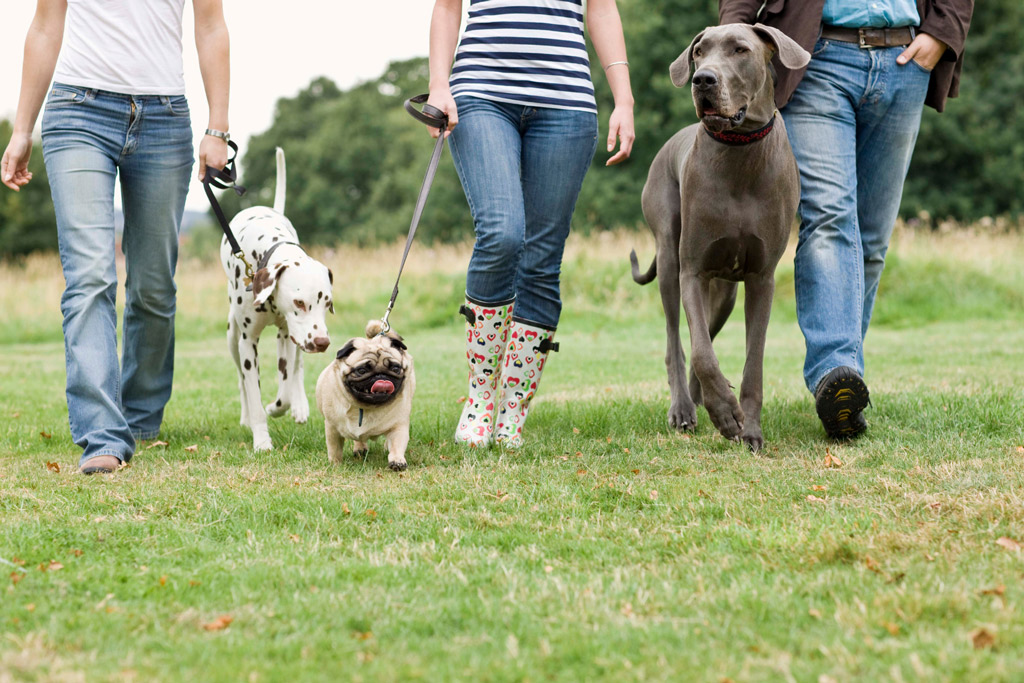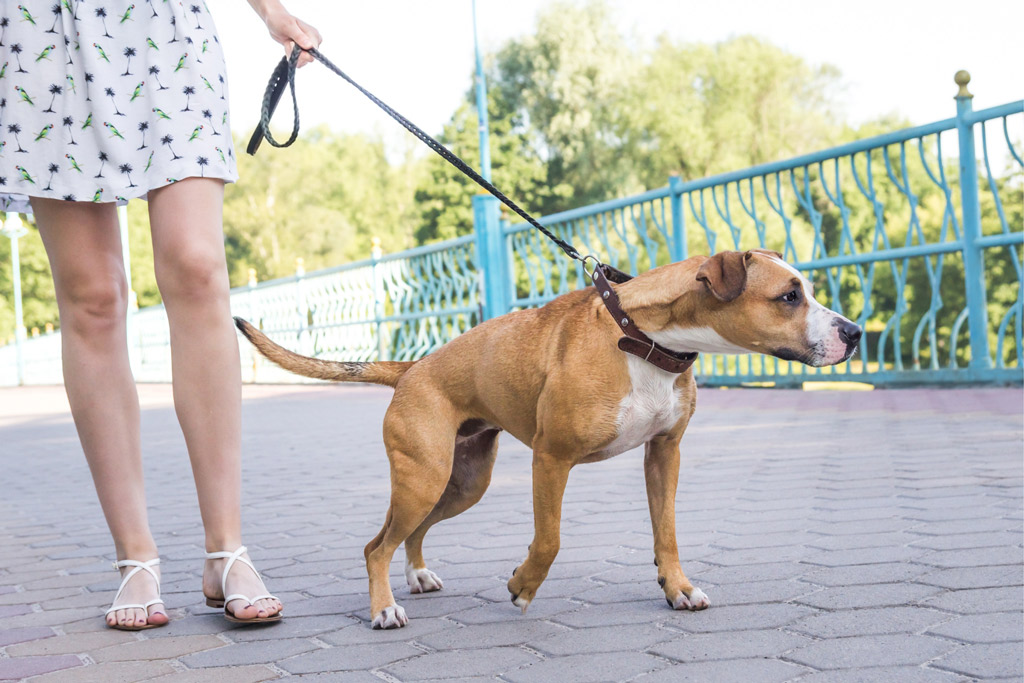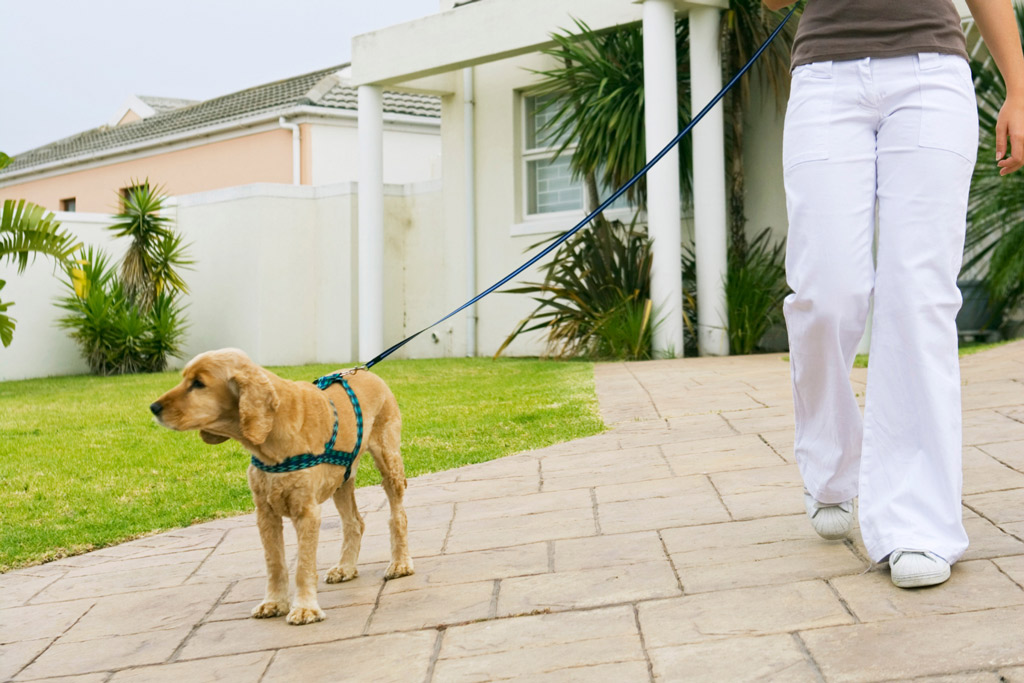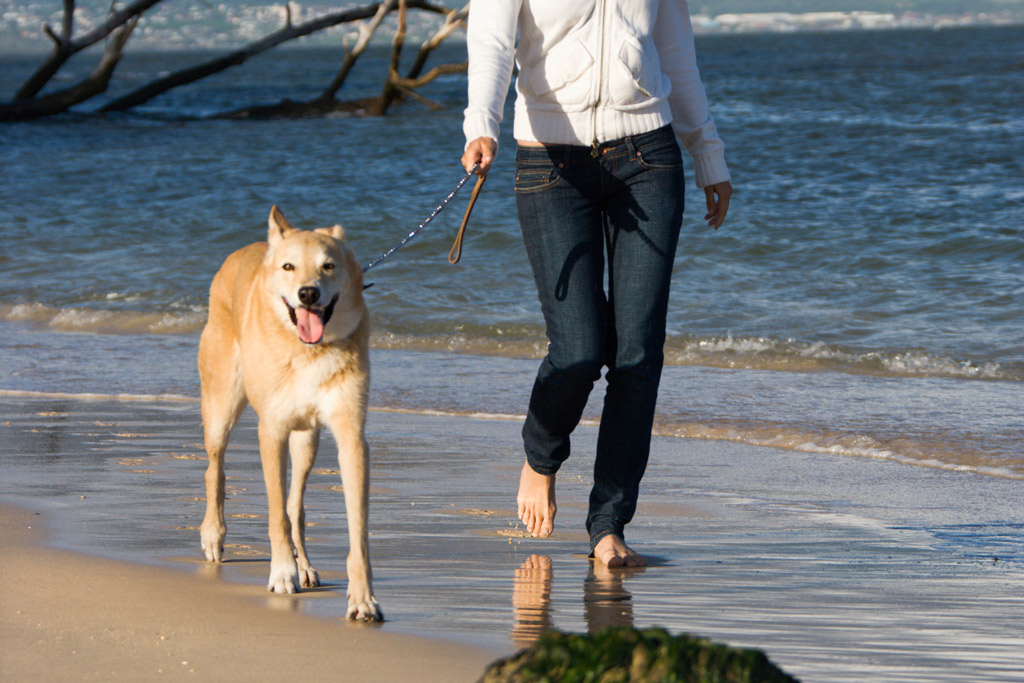
Walking your dog is a great exercise for both you, the owner, and your dog. However, you might be wondering how to determine how much exercise does your dog, in particular, need and how often should you take your dog for a walk. So, how often should I walk my dog?
On average, you should walk your dog a minimum of 20-30 minutes a day for adult dogs. Bigger and more active dogs can easily double that amount. Puppies, on the other hand, shouldn’t walk more than 30min in total a day.
Also, how much time you have to walk your dog matters when determining the amount of walking your dog will get. Even potty walks have a role to play in this equation.
How Much Exercise Does Your Dog Need
Beyond potty break walks, your dog needs longer walks. These keep him mentally and physically healthy. Without enough exercise to stimulate their mind, some dogs become anxious or destructive.
According to VCA Animal Hospitals, the one-on-one time spent on walks can help deter attention-seeking behaviours like whining or barking. Plus, it’s a great way to bond with your dog.
Different dogs have different walking needs. However, walking is a type of exercise that is beneficial for every dog. They need daily exercise to stay in shape, both physically and mentally.
As this physical activity depends on their particular needs, we’ll touch on the three key factors that determine how much walking your dog requires:
- Dog breed.
- Dog age.
- Dog energy levels.
And given that your schedule will play a role, we decided to include it as a fourth factor.
Now, let’s see how these influence the amount of walking and the frequency:
#1 – Your Dog’s Breed
Sporting and working breeds, such as Pointers, Collies and Shepherds, mostly have higher exercise requirements than dog breeds that are considered lapdogs, such as Yorkshire Terriers and Papillons.
#2 – Your Dog’s Age
Generally, younger dogs have more energy and will need more exercise than middle-aged dogs (5-8 years old) and seniors dogs (9 years old and over). Younger dogs usually spend more time playing than older dogs.
#3 – Your Dog’s Energy Levels
Most dogs can tolerate 20-30 minute dog walks on a daily basis if they are healthy. In addition, some dogs in great physical health can tolerate walks up to 2 hours or go hiking for hours at a time.

These higher-energy dog breeds may benefit from more frequent or longer walks:
- Border Collies and other herding breeds.
- Australian Shepherds.
- Labrador and Golden Retrievers.
- Boston Terrier.
- Jack Russel Terrier.
- Siberian Husky.
- Dalmatian.
- Vizsla.
On the other hand, these less-active dog breeds may be fine with just one or two shorter walks per day:
Toy breeds:
- Chinese Crested.
- Japanese Chin.
- Maltese.
- Pomeranian.
Small breeds:
- Brussels Griffon.
- Cavalier King Charles Spaniel.
- Pekingese.
- Tibetan Spaniel.
Medium breeds:
- Basset Hound.
- Chow Chow.
- Cocker Spaniel.
- English Bulldog.
Large breeds:
- Clumber Spaniel.
- Greyhound.
Extra-large breeds:
- Bernese Mountain Dog.
- Great Dane.
- Newfoundland.
- Saint Bernard.
- Mastiffs.
#4 – Your Schedule
If a 20-30 minute walk is the average per day, how can you exercise your dog in that amount on a busy schedule?
For those who can afford to hire dog walkers, then their dog exercise needs can be easily met. And if you are in the U.S. or Canada, we have a recommendation for you – Rover walker or daycare provider.
They have created a secure platform where you can easily connect with a local pet sitter near you who can offer overnight pet sitting, dog walking, or doggy daycare.
With this alternative, you can rest easy as a pet parent knowing your dog gets the daily exercise (& personalized care) they deserve.
However, if you cannot afford to hire a dog walker, aim for a 20-30 minutes walk at least once a day, preferably twice a day. When you don’t have the time for a 30min walk, you can split it in two: 15min twice a day.
However, remember than longer walks are more beneficial to your dog’s health.
In addition, you can also supplement exercise by playing with your dog at home or in the garden. You can try a game of fetch, which requires more energy from your dog. The goal is to have your dog engage in at least 10-15 minutes of continuous activity.
If you provide both physical and mental outlets for your dog, he will overall be a healthier and mentally more well-balanced dog.
Note: If your dog is in poor physical condition, you could use dog puzzle toys and roll a Kong all over the house and walk at a slower pace.
Check with your vet for other alternatives to help your dog get the exercise he needs.

How to Test Your Dog’s Walking Needs
Bear in mind that the four factors just covered are general guidelines. Each dog is different and might not fit in a general description.
For example, my parents have a Yorkshire Terrier, which most people define as a lapdog. However, Lur is very active, playful and loves exploring, and he’s 8 years old!
So, it’s probably best to test your dog’s energy levels to figure out the appropriate amount of time your dog needs, given his current health state.
- Take your dog out for a walk so you can monitor his energy level.
- If your dog starts off at an energetic pace, he might be ready for some exercise.
- However, if he starts to slow down about 25-30 minutes into the walk, he’s probably getting tired. Instead of eagerly striding forward, he may start to pant more and take more interest in his surroundings, i.e. sniffing around more.
- As soon as you see him getting tired, start to head on back home.
- Monitor his pace going back. Does he slow down even more, or can he keep up on the slower pace? If he slows down even further, then it means he has walked too far. Next time, your walk needs to be shorter because you have to account for the time it takes to walk back home.
- Also, watch his behaviour after the walk once you get home to assess if you need to cut the walk shorter:
- If your dog drinks water and immediately crashes on his bed and doesn’t move, he has over-exerted himself.
- If your dog starts limping during the walk or after he has rested from a long walk, then he went past his limit.

Which are the Best Times to Walk Your Dog
- Is it best to walk my dog first thing in the morning?
- Or last thing before bed?
- Maybe before meals?
- How soon should I walk my dog after he eats for optimum poop-opportunities?
It really depends, but the most important thing you can do is to keep your dog on a schedule.
According to veterinarian Michael W. Fox, dogs thrive on routine and an ideal dog walking schedule is:
- A short morning walk before breakfast.
- Another short walk or potty break midday.
- A longer walk or run before dinner.
- Another walk or potty break right before bed.
It might be great for dogs but not everyone has the time to follow this. The key point is that one long walk and a few short walks or potty breaks are good for many dogs.
So, how often should I walk my dog? At least once a day, but preferably twice—not counting potty breaks.
If a busy workday is making it hard to fit in a midday dog walk, no worries, reach out to our affiliate partner Rover walker to help your dog get his daily exercise.
Finally, do you have all you need to go for a walk?
Go to my Dog Outdoors Kit list on Amazon, with suggestions for dog basic items that you will need during walks!

Why is it Important to Walk Your Dog
Dog walking is a fundamental activity of dog companionship, and one of the best ways to maintain their emotional, mental, and physical health.
Dogs like longer walks because it gives them a chance to explore the world.
Here are some walking benefits for your dog:
- Weight control. Regular exercise helps your dog burn extra calories and maintain a healthy weight, which can prevent obesity.
- Joint health. Keeping in motion helps your dog’s joints to stay in good shape because if your dog stays still for long his legs get stiff. Basically, you can reduce the impact of arthritis.
- Digestive and urinary health. When you take your dog for a walk, he pees and poops, i.e., regular walks keep him regular.
- Mental stimulation. Your dog needs new adventures to stay mentally alert and healthy, and walking to new places and seeing new things definitely helps. Walking also reduces unwanted behaviours like chewing, barking, whining, digging, and being anxious or hyperactive.
- Bonding. Walks are everyday chances to bond with your dog by spending quality time together having fun. It’s your chance to show your dog that you are all he needs to have fun and for your dog to show you how much he adores you by following your commands.
- Socialization. Going for walks can expose your dog to many learning experiences like how to respond when seeing other people and dogs. Also, it will help him to feel more comfortable in a variety of environments. Moreover, learning how to appropriately respond to various situations can help your dog become a valuable family member and doggy citizen.
Did you notice that the benefits above do not only apply to your dog?
Regular dog walks can improve your health too, including helping you maintain or lose weight.
If you want to know more about why having a dog is beneficial for humans, check out Can my dog improve my wellbeing?
Read also: For more ideas, check our Dog Exercise Indoors and Dog Exercise Outdoors blog posts.
